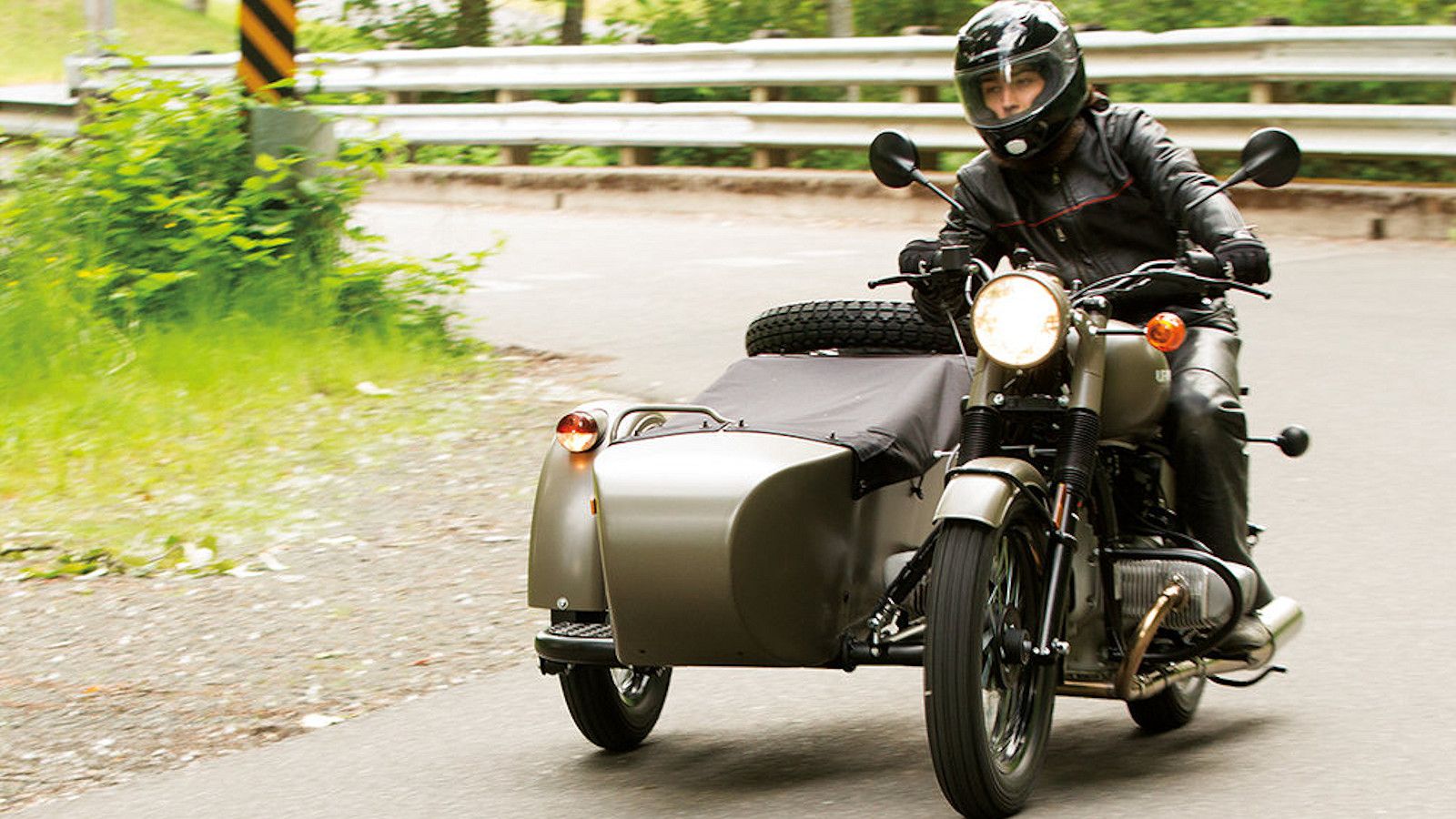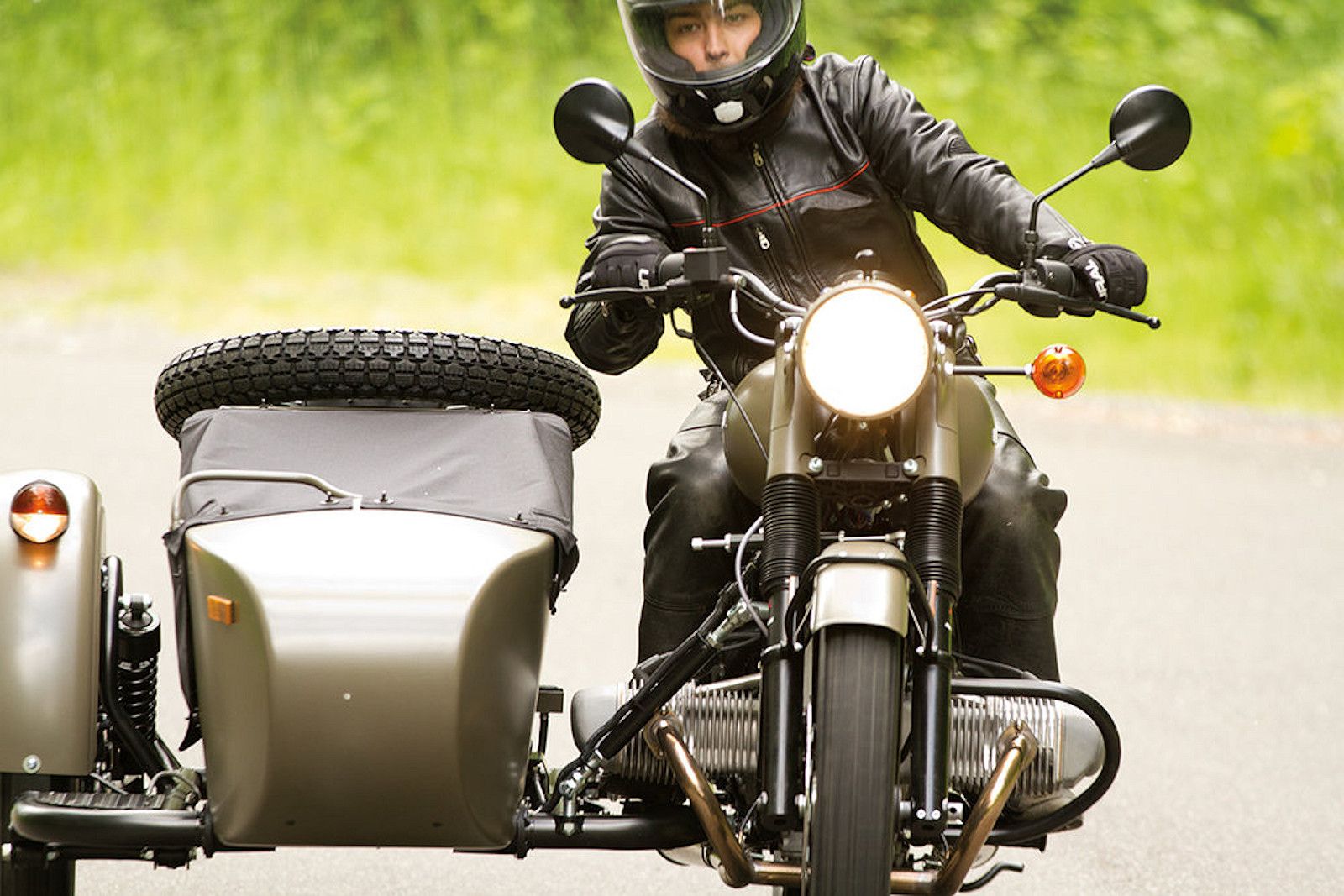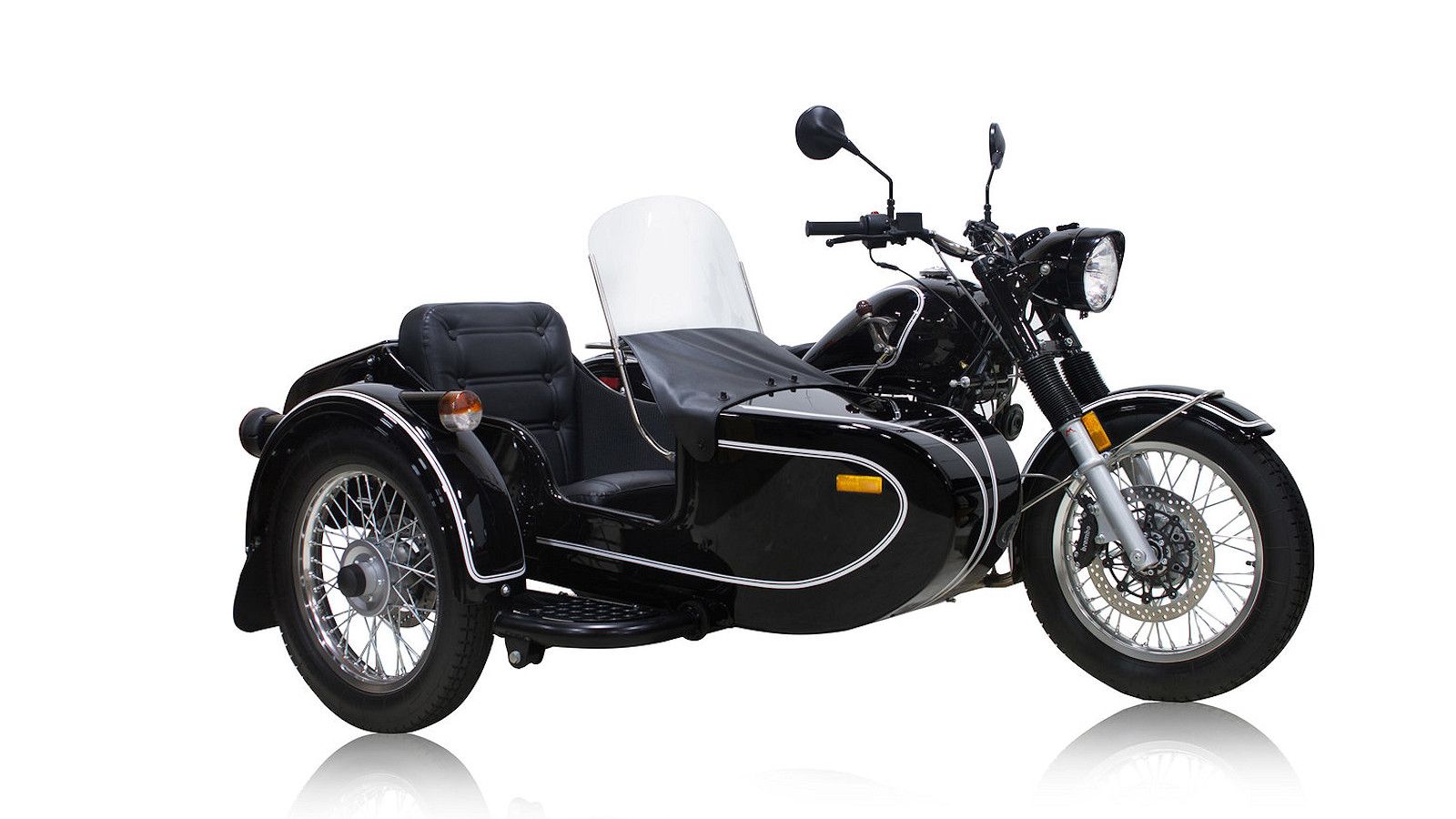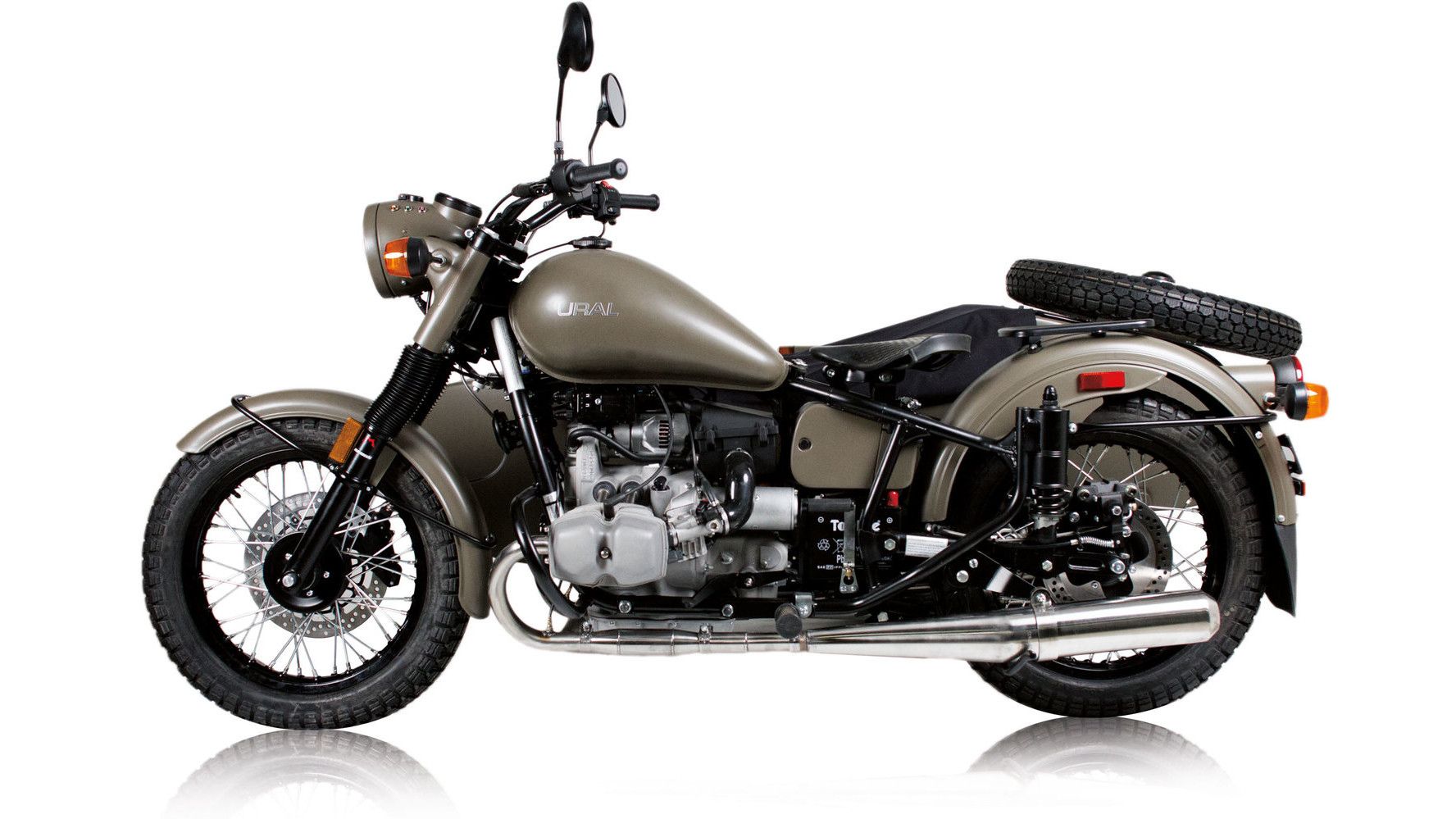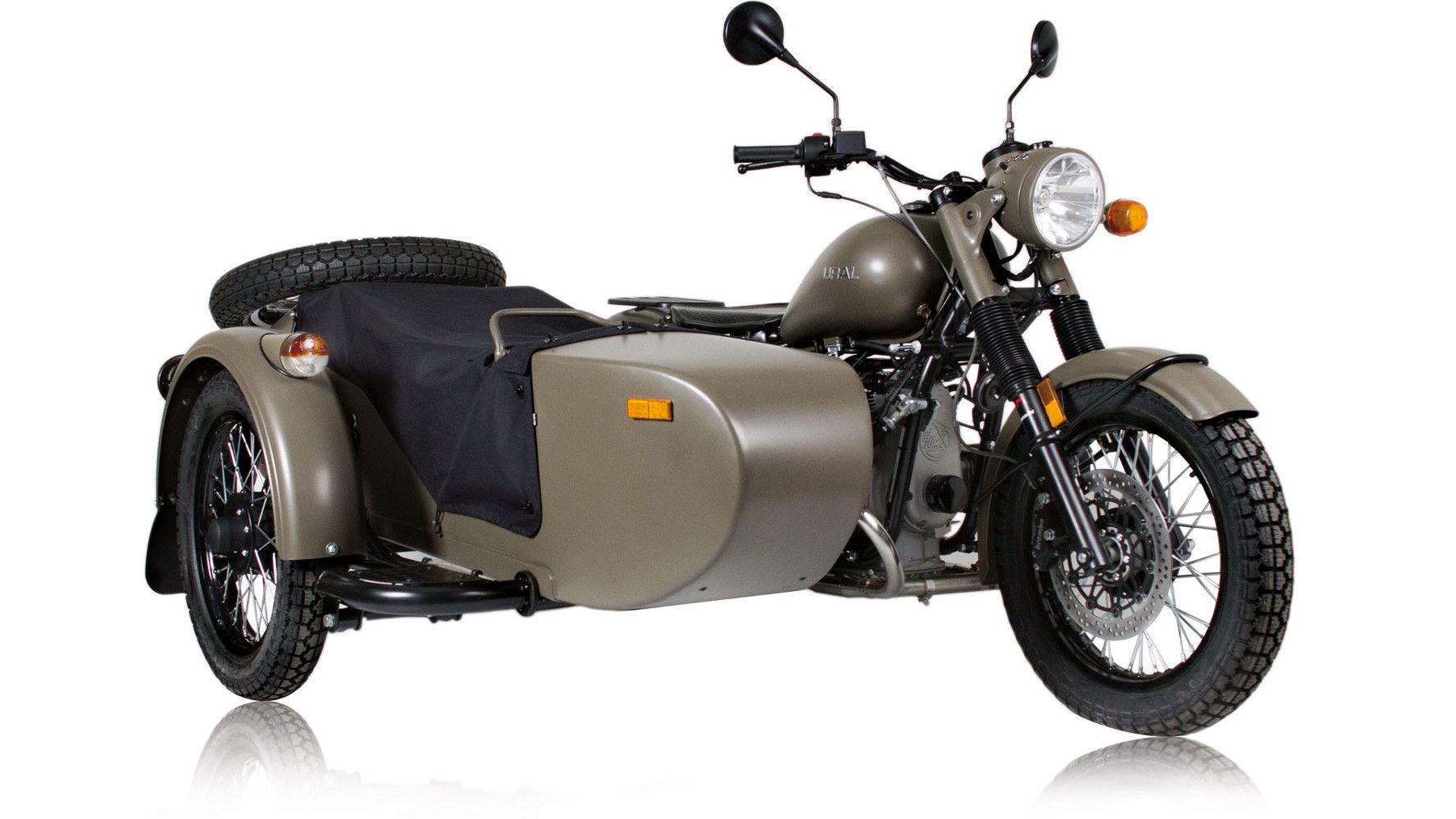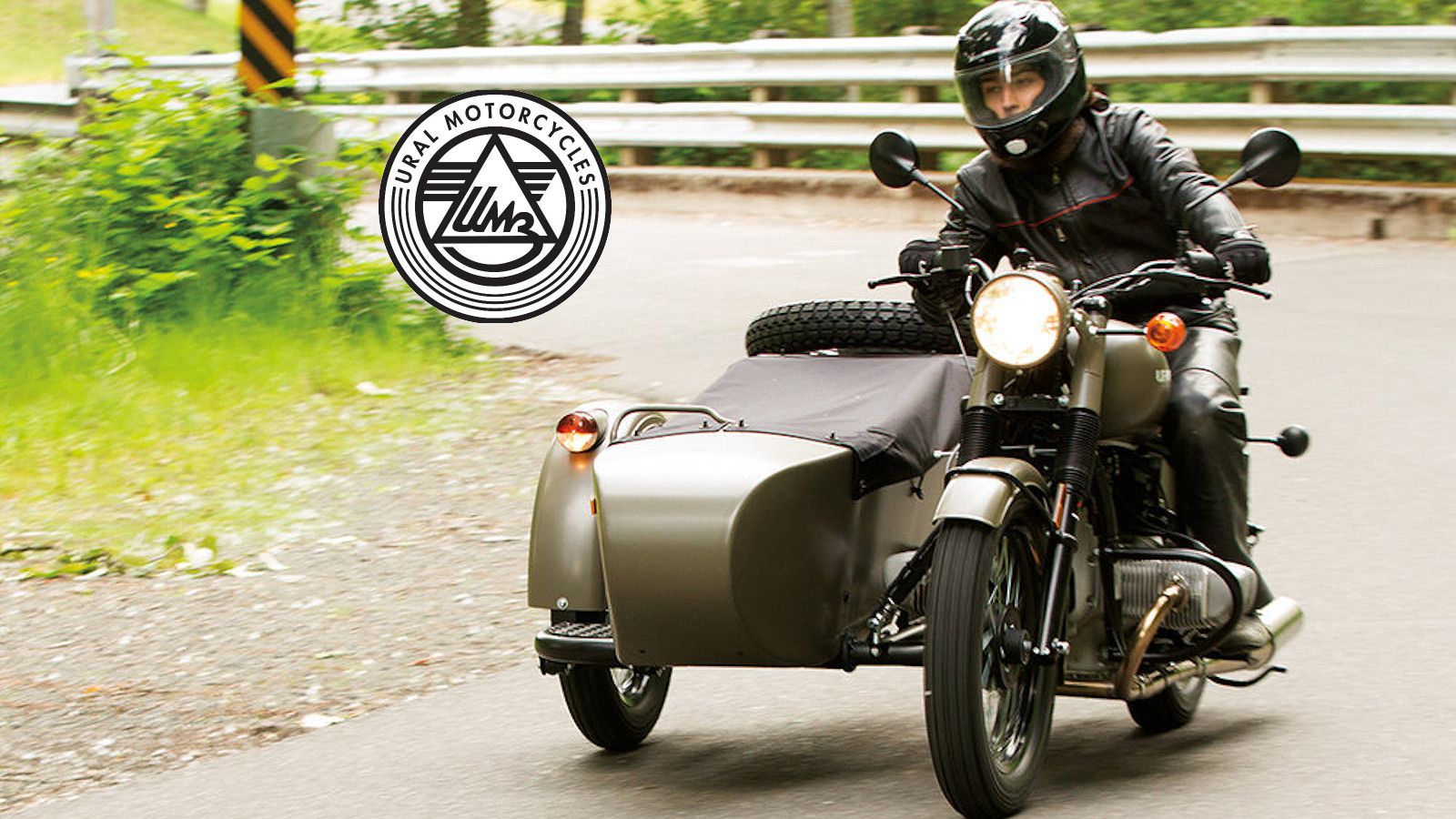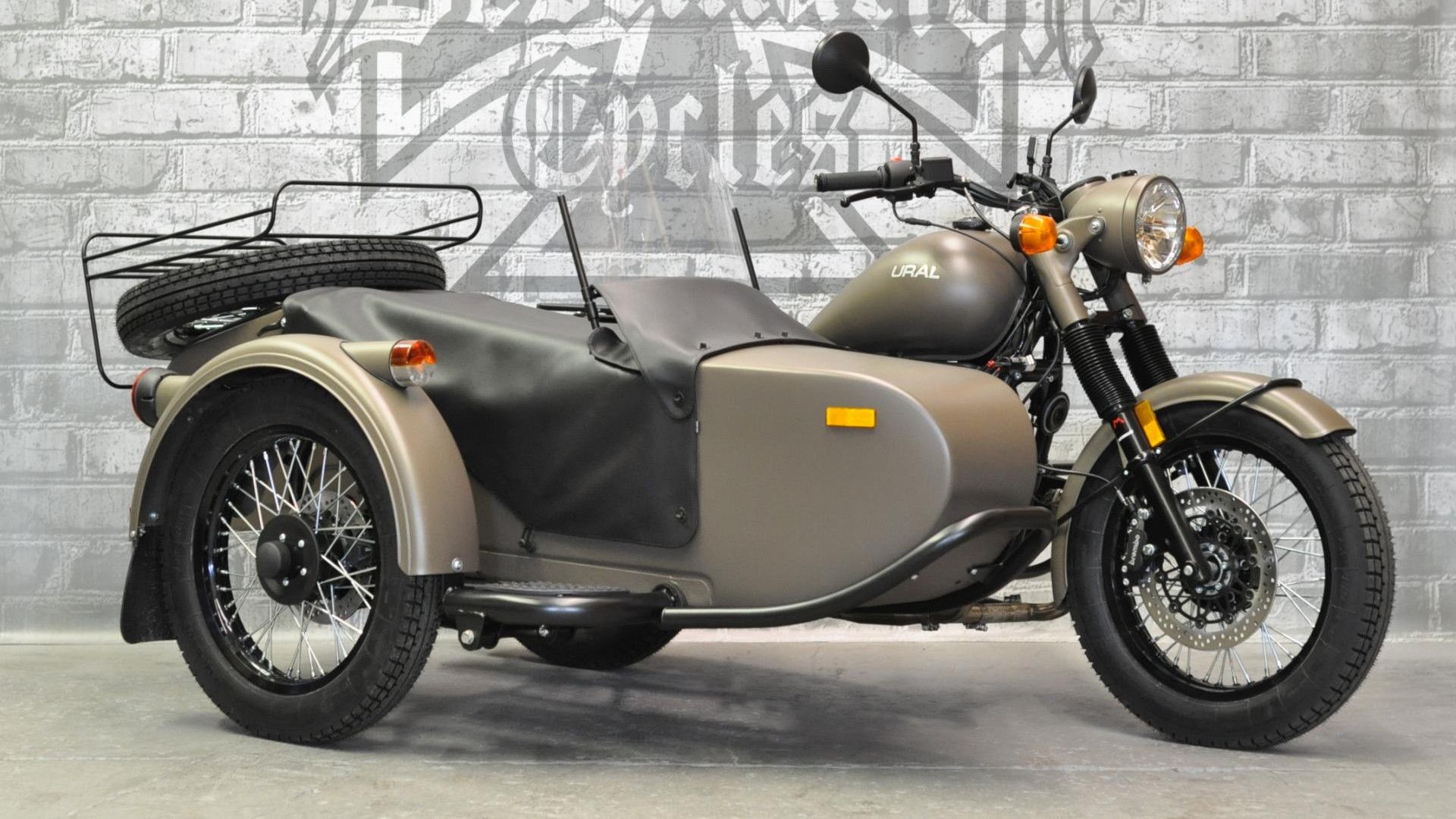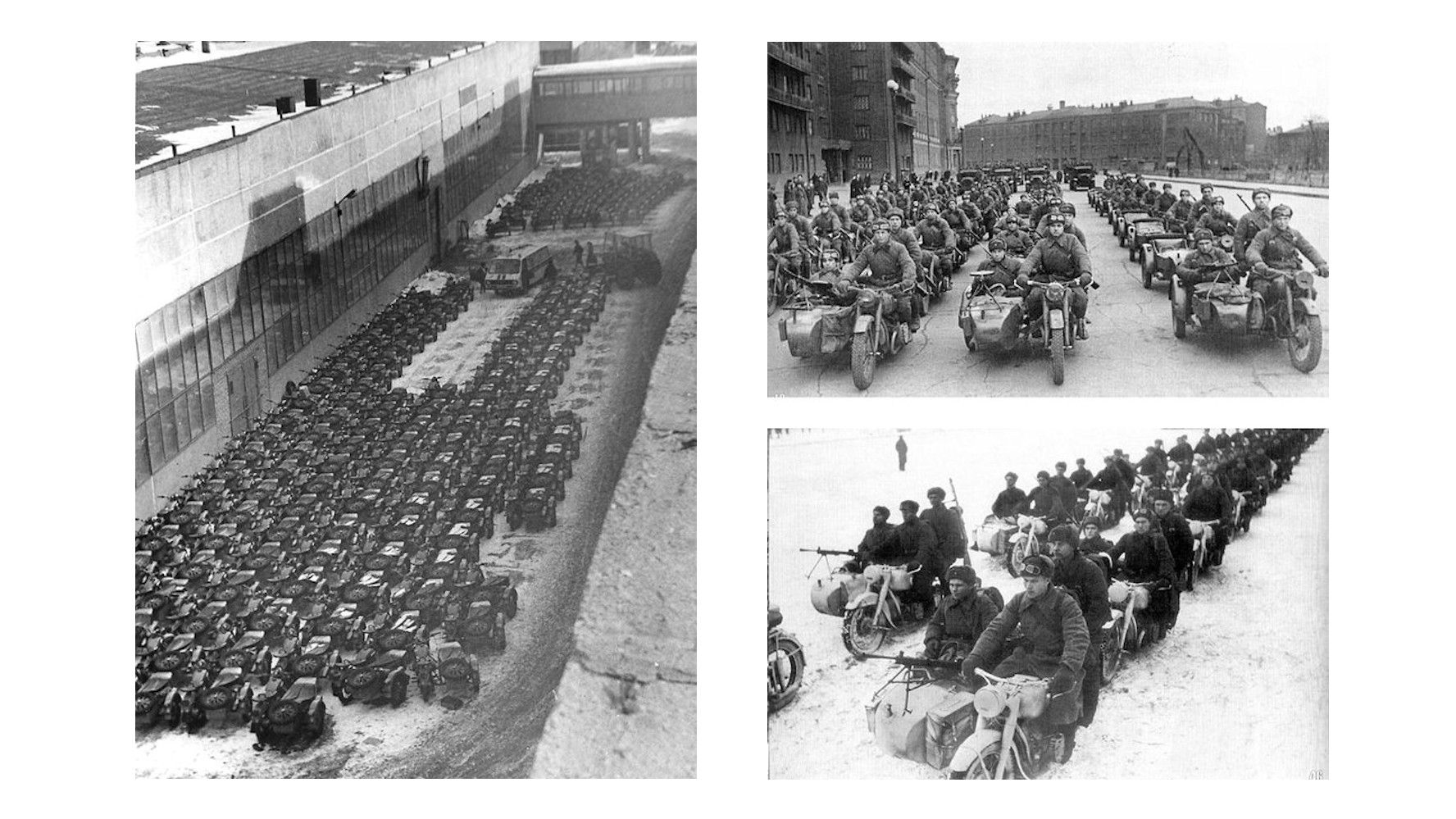Ural offers the M70 for the rider base who lacks the adventuresome spirit to ride on the old-school IMZ front end prevalent throughout the rest of the range. It hits all the other major Ural high points with a look that's straight out of Germany circa 1930s-ish with the classic boxer engine, and of course, a sidecar. This ride is definitely the most modern machine Ural brings to the table, in spite of its looks and this is the last year it is offered, so let's dive into this rolling paradox to see what else our crazy Russian buddies have going on over there.
2019 Ural M70
- Make: Array
- Model: 2019 Ural M70
- [do not use] Vehicle Model: Array
2019 Ural M70 Design
“Old school” just doesn't do it justice; a wholly inadequate term for what the M70 has going on. If you're unfamiliar with the brand, perhaps a little backstory is in order; vehicle-zero was a German-made sidecar captured by the Russians. That original bike was reverse-engineered, and over 3 million sidecars, most based on that original M72 design, were built in the years since 1941. They were sent to the front lines of WWII in 1942 and used in the Battle of Stalingrad. During the war almost 10,000 M72 sidecars ran recon and communication missions as well as evacuating the wounded. The M70 is the result of that humble beginning.
The modern M70 is the only sidecar in the Ural lineup with telescopic juice forks that mark a sharp departure from the aircraft landing-gear front end that is ubiquitous throughout the rest of the range. Bellowed fork boots contribute to the rugged good looks and protect the swept area of the inner fork tube. Laced wheels amplify the aged panache, and for the first time, the spare tire is universal and will bolt right up in any of the three possible positions. Even the frame geometry plays a part, because it looks like it's going to be a rigid assembly, but there's a surprise at the end in the form of a proper swingarm with a pair of coil-over shocks to soak up the bumps.
The headlight housing contains the cyclops beam with the speedometer and a handful of idiot lights mounted on top to handle all of the instrumentation. A 5.5-gallon teardrop fuel tank dominates the flyline as it dives off to meet the rather Spartan solo seat that really drives its dated nature home. Tower covers hide most of the springs on the rear shocks, and the strutted full rear fender just completes the retro look for the M70.
Of course, the sidecar takes it to another level entirely to make Ural's lineup without peer on the world stage. It rocks a Tonneau cover and a 12-volt outlet as the only stock factory accessories, but Ural offers a windshield kit and luggage rack options so you can personalize the boat-like sidecar to fit your needs/taste/whatever.
2019 Ural M70 Chassis
Tubular-steel members make up the standing structure, and from the left side, the geometry looks very much like it's going to terminate at a rigid rear end. Instead, the trailing corner of the “triangle” acts as a hardpoint for the Sachs rear shocks that spring off the yoke-style swingarm. The shock covers are distinctly dated, but the shocks themselves are modern enough with a five-position preload feature as the only suspension tweak.
On the sidecar there's another similarly-adjustable strut, and at all three points there's a blackout aluminum rim and steel spokes to round out the rolling chassis. Instead of the usual arrangement up front, the M70 rocks modern telescopic hydraulic forks that give you a superior ride compared to the IMZ front end.
There are three brakes in total – one on each wheel and single discs all around -- but if you're looking for ABS you're barking up the wrong tree. A 295 mm NG disc and four-pot Brembo caliper slow the front wheel with a 256 mm disc on the bike's rear wheel and a 245 mm NG disc on the sidecar.
Behind the sidecar passenger is a lockable hatch that covers a voluminous trunk with a total of 2.9 cubic-feet of storage, and of course, the sidecar passenger compartment makes a dandy storage area too, especially with the cover in place.
|
Front suspension: |
40 mm Marzocchi telescopic forks |
|
Rear suspension: |
Double sided swing-arm with two Sachs hydraulic spring shock absorbers, 5x adjustable |
|
Sidecar suspension: |
Single sided swing-arm with Sachs hydraulic spring shock absorber, 5x adjustable |
|
Wheels: |
2.15 x 18 Aluminum rims with steel spokes |
|
Tires: |
Heidenau HF-308, 4.0×18″ |
|
Front brake: |
4-piston fixed Brembo caliper with 295 mm floating NG rotor |
|
Rear brake: |
HB big bore single piston integrated floating caliper with 256 mm fixed NG rotor |
|
Sidecar brake: |
2-piston fixed Brembo caliper with 245 mm floating NG rotor |
2019 Ural M70 Drivetrain
The 749 cc, flat-twin “Boxer” engine looks as though it could be the grand-daddy of Beemer's current opposed-twin mill; another testament to its origins. It also bears the majority of upgrades on this machine for 2019. The factory started by stepping up its machine-shop game with optimized ports to increase flow through the two-valve heads. A shortened exhaust tract reduces the amount of heat that transfers from the waste gas to the head, and the heads themselves now have enlarged cooling fins to deal with the heat that does transfer.
Pushrods actuate the poppets and add to the old-school charm with external tubes right on top of the mill. Also new for this year are the pistons that rock a hardened crown with teflon inlays on the skirts, manganese-phosphate treated compression rings and a molybdenum coated top-ring face, all to reduce piston-to-cylinder friction and minimize mechanical losses in the jugs. The oil system was on the receiving end of an update as well with a capacity increase up to 2.7-quarts and an improved oil pick-up in the sump to meet the increased demands of the high-volume system.
Keihin throttle bodies replace the old carburetors, and they boast a host of advantages to include a new idle-control system, new self-priming fuel pump with filter and bypass valve for over-pressure relief. It's a “square” engine with bore and stroke both measuring 78 mm, and the compression ratio is cheap-gas friendly at 8.6-to-1. A kickstarter backs up the electric start for a bit of starter-system redundancy that translates directly into added safety no matter how you use the thing, 'cause let's face it, you ain't push starting this 700-plus pound monster.
A manual transmission crunches the ratios with four speeds forward and one in reverse so you'll never have to Fred Flintstone the M70 around the parking lot. In spite of the engine improvements, power output is still modest with 41-horsepower at 5,500 rpm and 42 pound-feet of torque at 4,300 rpm.
|
Engine: |
OHV air cooled 2 cylinder 4 stroke “boxer” (flat twin), 2 valves per cylinder |
|
Displacement: |
749 cc |
|
Bore and stroke: |
78 mm x 78 mm |
|
Max output: |
41 hp @ 5,500 rpm |
|
Max torque: |
42 lb-ft @ 4,300 rpm |
|
Compression: |
8.6:1 |
|
Fuel system: |
Throttle body EFI |
|
Starting: |
Electric & Kickstart |
|
Clutch: |
Double-disc dry |
|
Transmission: |
Manual, 4 forward/1 reverse |
|
Primary drive (rear wheel): |
Driveshaft |
|
Final drive ratio: |
4.62 |
|
Engageable sidecar wheel drive: |
No |
2019 Ural M70 Pricing
The base M70 rolls for $16,499. Military Green is the stock color, but Ural offers an extensive palette to include a choice between nine colors for another grand, and a pair of camouflage choices for another $1,500. The standard drivetrain has a silver finish, but for an extra grand you can go for the blackout treatment instead.
|
Standard Accessories: |
Sidecar Power Outlet, Sidecar Tonneau Cover |
|
Warranty: |
2-years parts and labor unlimited mileage |
|
Colors: |
Military Green, Asphalt, Green Metallic, Bronze Metallic, Urban Camo, Woodland Camo, Burgundy Metallic, Grey Metallic, Sahara, Forest Fog, Gloss Black, Terracotta Metallic |
|
Drivetrain Color: |
Silver, Black |
|
Price: |
$16,499, Camo: $17,999, Premium Colors: $17,499, Black Drivetrain +$1,000 |
2019 Ural M70 Competitors
How does one compare the only game in town? Well, I reckon the best we can do is to grab a couple of likely three-wheelers that may appeal to the same sort of rider. On the old-school tip, it's hard to get away from Harley-Davidson's Freewheeler for its performance, storage trunk and of course, dated panache. Unlike Ural, Harley uses performance as a selling point with a 1,868 cc V-Twin powerplant that generates 122 pounds of grunt at an amazingly-low 2,250 rpm to put it in another class entirely.
The Freewheeler runs six-speeds forward with electric reverse, and will definitely be more comfortable at interstate speeds than the overseas sidecar that, according to the factory, is most comfortable around 70 with little in the way of a power reserve at interstate speeds. H-D comes out on top in the tech department too with ABS and traction control on top of a backtorque-limiting feature that does, essentially, the same thing as the slipper clutch, it just goes about it differently. Never one to use price as a selling point, H-D looks for $28,099 for its base, Vivid Black model, and it goes on up over 30 K if'n you fancy a two-tone finish.
Can-Am provides my second competitor with its Spyder F3-T. Spyder runs in a Delta configuration that puts two wheels up front for a ride that is inherently more stable than the H-D or the Ural. The factory doubles down on the stability with a host of electronic safety systems that include ABS, traction control, stability control and Hill-Hold, plus a power-steering feature that helps you crank that front end around.
Lookswise, the Spyder is like chalk-and-cheese against the other two with ultra-modern looks that make no effort to strike any sort of historical chord. The engine ain't playin' either with 115-ponies and 96 pounds o' grunt on tap, so it rivals the Freewheeler out of the hole, and tops the Ural all around. Can-Am brings a semi-automatic transmission to the table for simpler operation that will appeal to many, but as you'd expect, the sticker reflects all of that at $21,499 MSRP for the base model.
panache0}
“Ural is a curious company with an interesting product line, but at the end of the day, it's only going to appeal to someone who just has to have a sidecar, and doesn't want to go the aftermarket-kit route. To paraphrase Lincoln: “People who are into this kind of thing will find this to be just the kind of thing they're into,” or some such. Bottom line, Ural isn't taking business from anyone, but instead, carving a niche all its own.”
She Said
My wife and fellow motorcycle writer, Allyn Hinton, says, “If you're looking at a sidecar because it's fun and practical, you're looking in the right place. If you're looking because you don't want to hold a bike up and the big trikes are too expensive, the Ryker introduced by Can-Am this year might be worth a look. We finally have a three-wheel option with an MSRP well under $10k. That aside, I'm a little sad that this is the last year for the M70. It truly is an iconic bike with roots well-entrenched in history.”
2019 Ural M70 Specifications
|
Engine & Drivetrain: |
|
|
Engine: |
OHV air cooled 2 cylinder 4 stroke “boxer” (flat twin), 2 valves per cylinder |
|
Displacement: |
749 cc |
|
Bore and stroke: |
78 mm x 78 mm |
|
Max output: |
41 hp @ 5,500 rpm |
|
Max torque: |
42 lb-ft @ 4,300 rpm |
|
Compression: |
8.6:1 |
|
Fuel system: |
Throttle body EFI |
|
Starting: |
Electric & Kickstart |
|
Clutch: |
Double-disc dry |
|
Transmission: |
Manual, 4 forward/1 reverse |
|
Primary drive (rear wheel): |
Driveshaft |
|
Final drive ratio: |
4.62 |
|
Engageable sidecar wheel drive: |
No |
|
Chassis: |
|
|
Front suspension: |
40 mm Marzocchi telescopic forks |
|
Rear suspension: |
Double sided swing-arm with two Sachs hydraulic spring shock absorbers, 5x adjustable |
|
Sidecar suspension: |
Single sided swing-arm with Sachs hydraulic spring shock absorber, 5x adjustable |
|
Wheels: |
2.15 x 18 Aluminum rims with steel spokes |
|
Tires: |
Heidenau HF-308, 4.0×18″ |
|
Front brake: |
4-piston fixed Brembo caliper with 295 mm floating NG rotor |
|
Rear brake: |
HB big bore single piston integrated floating caliper with 256 mm fixed NG rotor |
|
Sidecar brake: |
2-piston fixed Brembo caliper with 245 mm floating NG rotor |
|
Dimensions & Capacities: |
|
|
Overall length: |
94.6 inches |
|
Overall height: |
53.4 inches |
|
Overall width: |
62.3 inches |
|
Seat height, (unladen): |
29.5 inches |
|
Ground clearance (unladen): |
4.9 inches |
|
Dry weight: |
710 lbs |
|
Fuel grade: |
91 Octane, unleaded |
|
Fuel tank capacity: |
5.5 gals |
|
Reserve: |
app. 1 gal |
|
Estimated fuel economy: |
31-37 mpg |
|
Estimated range: |
155-185 miles |
|
Recommended max cruising speed: |
70 mph |
|
Max permissible weight: |
1,140 lbs |
|
Trunk volume: |
2.9 cu ft |
|
Electrical: |
|
|
Alternator: |
Denso, Peak Output 40 Amp @ 14vdc, 560 Wt |
|
Battery: |
FAYTX20HL (12V, 20A) |
|
Headlight: |
H4 |
|
Spark plugs: |
NGK BPR6HS |
|
Details: |
|
|
Standard Accessories: |
Sidecar Power Outlet, Sidecar Tonneau Cover |
|
Warranty: |
2-years parts and labor unlimited mileage |
|
Colors: |
Military Green, Asphalt, Green Metallic, Bronze Metallic, Urban Camo, Woodland Camo, Burgundy Metallic, Grey Metallic, Sahara, Forest Fog, Gloss Black, Terracotta Metallic |
|
Drivetrain Color: |
Silver, Black |
|
Price: |
$16,499, Camo: $17,999, Premium Colors: $17,499, Black Drivetrain +$1,000 |
Further Reading
Harley-Davidson Freewheeler
See our review of the Harley-Davidson Freewheeler.
Can-Am F3-T/ F3-T Limited
See our review of the Can-Am F3-T / F3-T Limited.
Ural CT
See our review of the Ural CT.
Ural Gear Up
See our review of the Ural Gear Up.
Can-Am Ryker
See our review of the Can-Am Ryker.
Ural Motorcycles
Read more Ural news.

